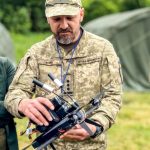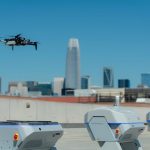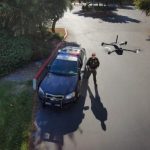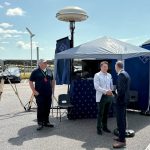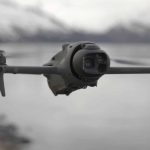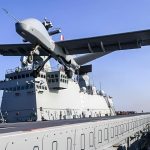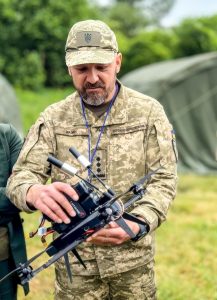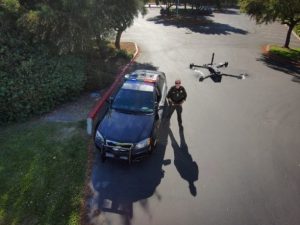Navigating the Future of Drone Security: Insights from Parsons’ CUAS Innovations
Strange drone sightings over communities and sensitive government installations often dominate the news, raising critical inquiries: Are those really drones? Who is operating them? What motives drive their presence in these sensitive areas? How are we addressing this growing concern?
In a recent shift, Da-Jiang Innovations (DJI) announced the abolishment of its geofencing feature, compelling government agencies and critical infrastructure operators to urgently seek solutions to counteract both unauthorized and hostile unmanned aircraft system (UAS) incursions. Acknowledging the persistent nature of drone use, Parsons Corporation—a premier provider of innovative technology in national security and global infrastructure—understands the necessity to develop counter-unmanned aircraft systems (CUAS) capable of addressing current and future threats.
Rigorously Developing Effective CUAS Solutions
Prior to deploying CUAS solutions in operational environments, Parsons undertakes a thorough development process, identifying the optimal mix of current and cutting-edge technologies to fulfill client requirements. Utilizing the Parsons Digital Threat, Testing, and Training Environment (DT3E)—a modeling and simulation tool employing digital twins of systems and environments—allows for comprehensive testing against real-world threats and scenarios. This verification process ensures that we can customize our architectures and validate solutions for specific client scenarios before implementation. Field trials subsequently take place at Parsons’ CUAS Center of Excellence in Summit Point, West Virginia.
The Center of Excellence serves as a central innovation hub where experts, technology, and strategic partners unite to integrate and test solutions tailored for Group 1, 2, and 3 UAS threats. This facility’s advantageous location permits not only customer demonstrations near Washington, D.C. but also enables continuous drone operations. The open airspace has attracted a plethora of industry vendors, facilitating the integration and testing of their sensors, radars, and effectors with our custom CUAS solutions. The influx of government clients visiting Summit Point enhances the visibility of these vendors and their latest CUAS innovations.
DroneArmor™: Customizable CUAS
The market offers various CUAS solutions for active and passive detection, identification, tracking, and mitigation of UAS threats, enabling Parsons to create tailored solutions suited to individual client needs. Our DroneArmor™ system—a Modular Open System Approach (MOSA) solution—follows the principle that there is no universal answer for CUAS challenges. These solutions vary considerably in price and effectiveness depending on specific missions, geographical contexts, and threat landscapes. DroneArmor™ is adaptable, interoperable, scalable, and cost-efficient, maximizing operational effectiveness.
At its core, DroneArmor™ features a Command and Control (C2) component with a user-friendly interface crafted with Human Factors engineering principles and advanced AI/ML-driven autonomous functionality. This minimizes cognitive strain on users, presenting relevant data for swift decision-making. Our collaboration with system vendors means we can pre-integrate various sensors, radars, and effectors, crafting an optimal array for any situation.
Continuous Investment and Expansion
Our commitment to investing in and expanding the Center of Excellence keeps us at the forefront of the rapidly advancing CUAS technology. In recent years, we’ve developed a second testing range, a production facility equipped with CNC fabrication technology, and a command center featuring integrated radars, sensors, and systems. Testing against UAS threats may necessitate fabricating our own UAS to ensure compatibility with evolving challenges.
The Command Center consolidates data from sensor trials on the range as well as from simulated sensors via our DT3E. This simulated digital platform facilitates effective planning and strategies for operations, training, and system familiarization based on actual deployment contexts. Our software development and integration capabilities continually enhance our sensor integrations and sophisticated multi-modal AI/ML object detection, classification, and tracking functionalities.
Our new integration and testing range supports various installations and perimeter security tasks. We assess an array of sensors—from ground vibration detectors to tethered aerial surveillance drones and specialty cameras for intruder detection—developing and integrating UAS and UGS technology for search and rescue, surveillance, perimeter security, and access control into our CUAS framework.
Parsons actively seeks new CUAS sensors and effectors to augment our architecture, welcoming vendor collaborations for ongoing advancements in the CUAS domain. Partner vendors engage in integration and testing, benefiting from extensive trials against diverse threats while presenting their solutions to visiting customers.
Commitment to Security
Parsons remains dedicated to safeguarding our clients’ personnel, facilities, and critical infrastructure across all settings. Our DroneArmor™ solution and CUAS Center of Excellence position us to stay one step ahead of UAS threats, providing bespoke solutions that neutralize risks and protect lives and assets, while fostering compliant UAS operations to thrive.

Want more stories like this? Subscribe today!
